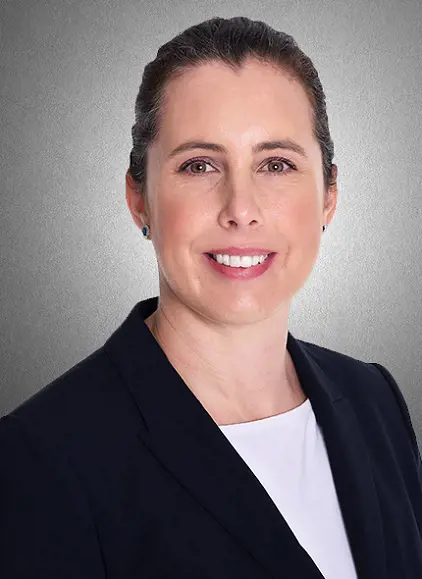SRK Australia has augmented its end-to-end specialist mining services with the creation of a dedicated mine closure group headed by experienced environmental engineer, Katina Strelein.
The team, formed amid increasing public scrutiny of post-mining environmental and social legacies, and compliance demands, helps SRK channel its unique multi-disciplinary and geographical breadth of expertise in mine closure planning.
Strelein’s appointment in early October was an important win for the company, says Pepe Moreno, SRK Australia’s head of mine waste. She is based at the company’s Perth, Western Australia, office. “SRK Australia has been working in diverse aspects of mine closure already, but mainly specialised areas such as estimation of closure costs, evaluation of long-term stability (physical and chemical), and engineering design of closure for various facilities,” he said.
With Katina joining our group, we are introducing cohesiveness to our service offering since she brings hands-on experience in mine closure planning, her thorough understanding of local and international regulatory compliance, as well as industry standards on mine closure."
SRK plans to expand the Australia-based mine closure team to at least 10 experts with global and local experience, a process likely to gain speed as Covid travel restrictions ease. As the mine closure lead, Strelein says she will draw on the strength of SRK’s existing expertise across fields such as geochemistry, geotechnical and hydrochemistry to expand the client offering and emulate the strong reputation in mine closure standards set by the US team, led by previous SRK group chairman Jeff Parshley in the Reno office.
It will be advantageous to be able to offer a complete mine closure service to Australasian clients from the Perth office, Strelein says.
Mine closure is a specialised field and a relatively new discipline in mining,” she said. “People have only in the past 10 years had mine closure roles within a mining company and it’s not covered by a particular degree. It’s been reliant upon people building up that knowledge on the back of the mining industry starting to embrace the idea of mine closure that more people have started to gain this specialised experience.”
Strelein began her 18-year professional career working in Kalgoorlie including at the Fimiston Super Pit, then at Newmont in Perth writing the mine closure plan for its Boddington gold mine in south-west WA, before spending time at a Perth-based environmental consultancy. She has operational experience across all aspects of mine site environmental management, specialising in mine closure planning and implementation, including geochemistry, landform design, development of completion criteria, cost estimating and liaison with regulators and other stakeholders.
A recent stint working for an iron ore explorer in Guinea, West Africa, extended Strelein’s interest in the niche mine closure field. During her four-year period flying in and out of London she was involved with plans to start a new iron ore mine next to a World Heritage Site. As part of the process, discussions with local community representatives focused on post-mining economic and social development prospects.
It was an opportunity of a lifetime working with a unique site that had so many social and environmental considerations, plus there was a huge drive to ensure the mine could operate and end in the best way possible to meet the strict international standards,” she said.
When Covid restrictions cut international travel in early 2020, Strelein and her husband decided to move back to their hometown of Perth where WA’s booming mining sector presented a lot of opportunities for experienced professionals. SRK’s Parshley approached her to come and work for SRK.
I had worked with Jeff when I was at Newmont and really respected his work, and the work out of SRK’s US offices,” Strelein said. “It was a really good opportunity to continue my work in mine closure especially with the strong reputation SRK has in this area. I get to come in and bring all that experience together with my skills, so it’s a great team to work with.”
Mark Noppé, newly appointed SRK group chairman, said Strelein’s appointment showcased the value the company placed on hiring quality people.
As a consultancy, we are a people business and in order to maintain that reputation we are centred around quality people,” he said. “Katina had great insight into our business already, she had respect for Jeff Parshley and the work he and his mine closure team did, and she knew the potential in Australia to further enhance and develop and provide similar services in our region from our regional base.”
Strelein says one of the key changes in mine closure work in the past decade has been the growing impact of technology advances.
The increasing availability of high-resolution aerial imagery at low cost is being used to improve closure cost estimates as areas, volumes of materials that need to be moved, distances that materials need to be transported can be calculated accurately,” she said. “The imagery can also be used to monitor rehabilitation at the landform scale which has not previously been possible.
Mine sites are also installing solar power or wind turbines which can also be a positive legacy for local communities as they can continue to provide power to the local area after mining has finished.”
Strelein and Moreno believe the mining industry and particularly major companies are increasingly prepared to adopt all available tools to address post-mining environmental, social and governance issues.
Most major miners have come a long way in their approach to mine closure, and even more so with an expectation of the community for deeper focus on ESG,” Moreno said. “But there is still room for improvement on the other side of the spectrum with costs being the major impediment. Maybe if there is a shift in how mine closure is seen – more as an investment rather than purely an expense – there could be an opportunity to improve the general mining industry approach.”

